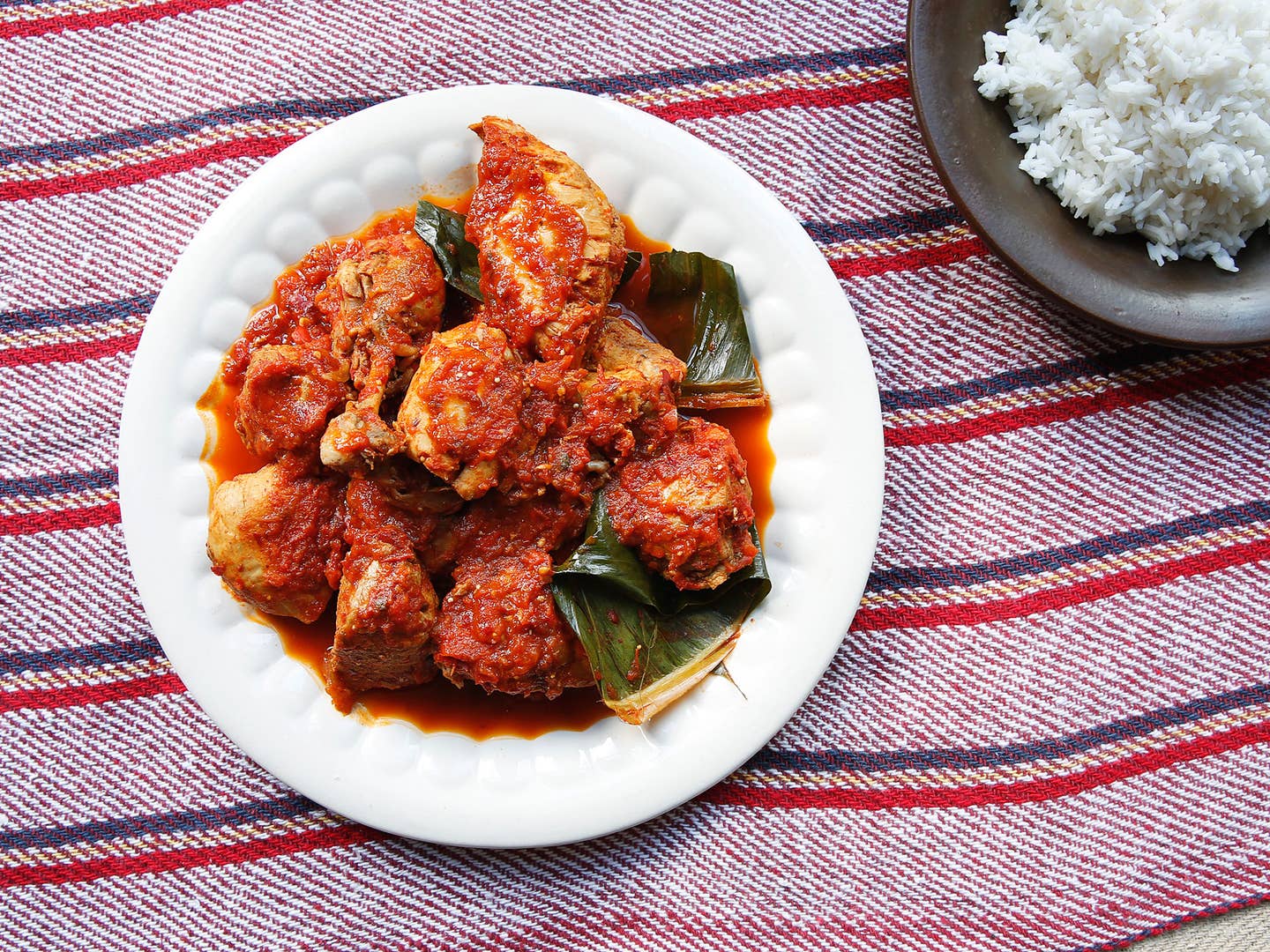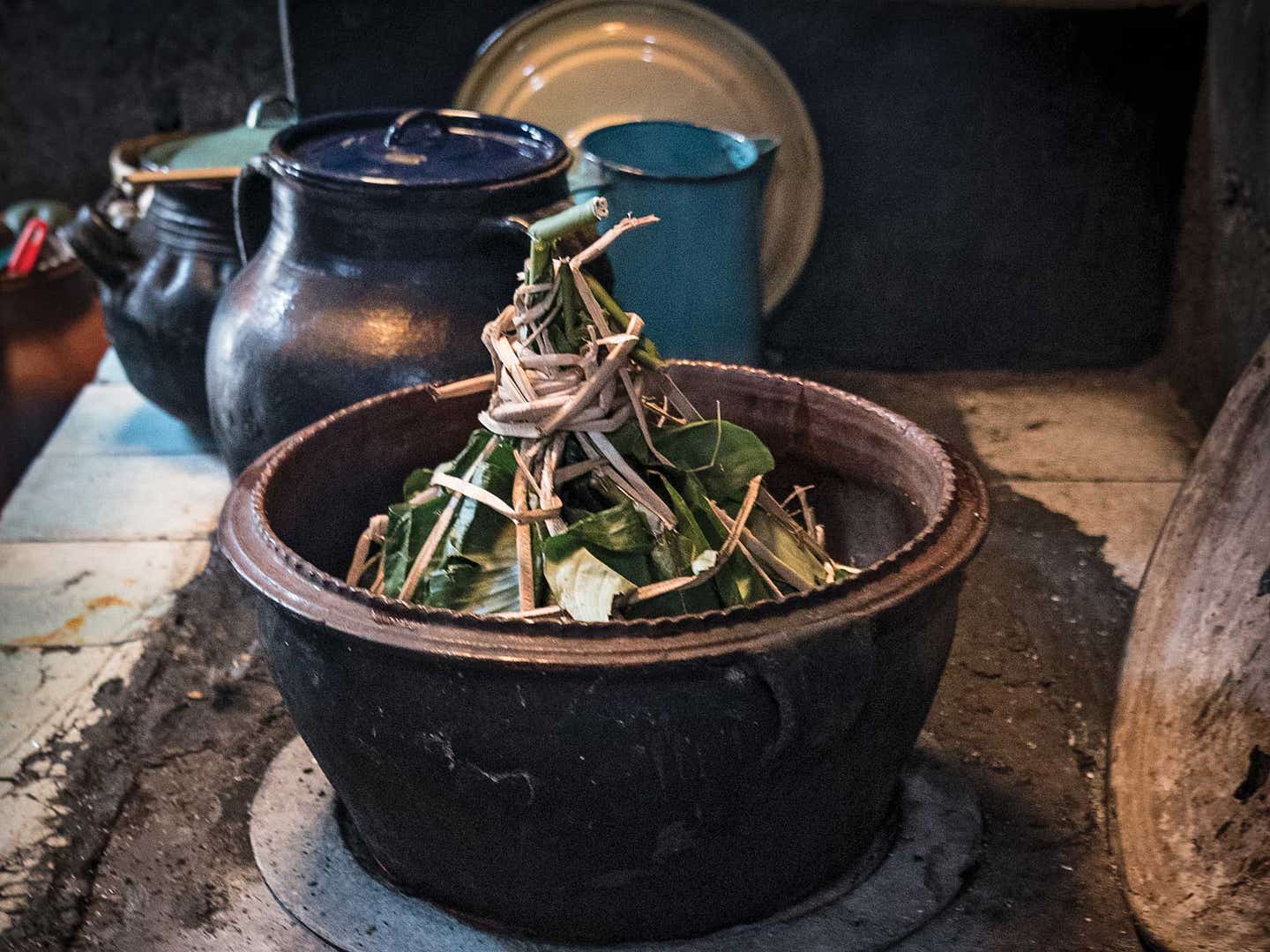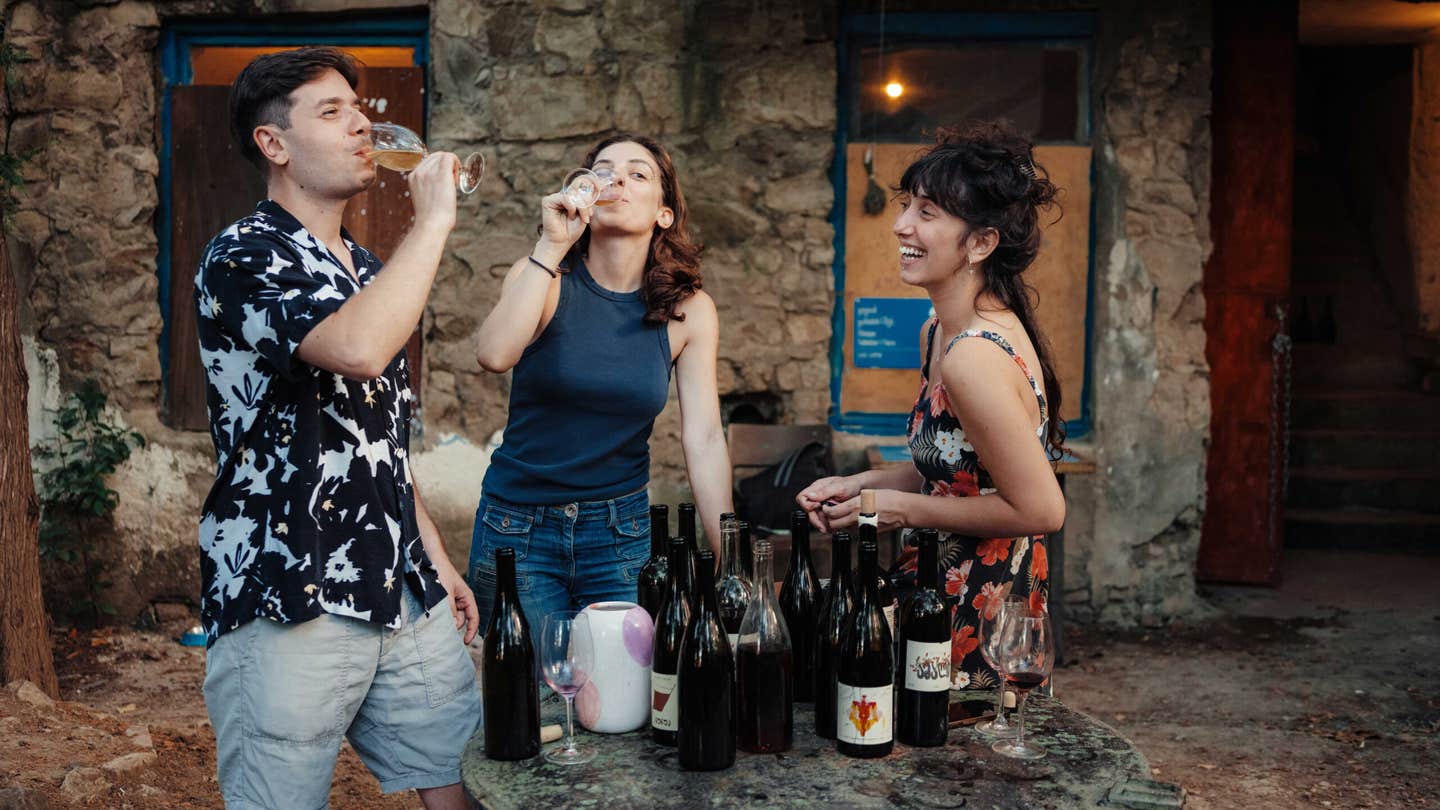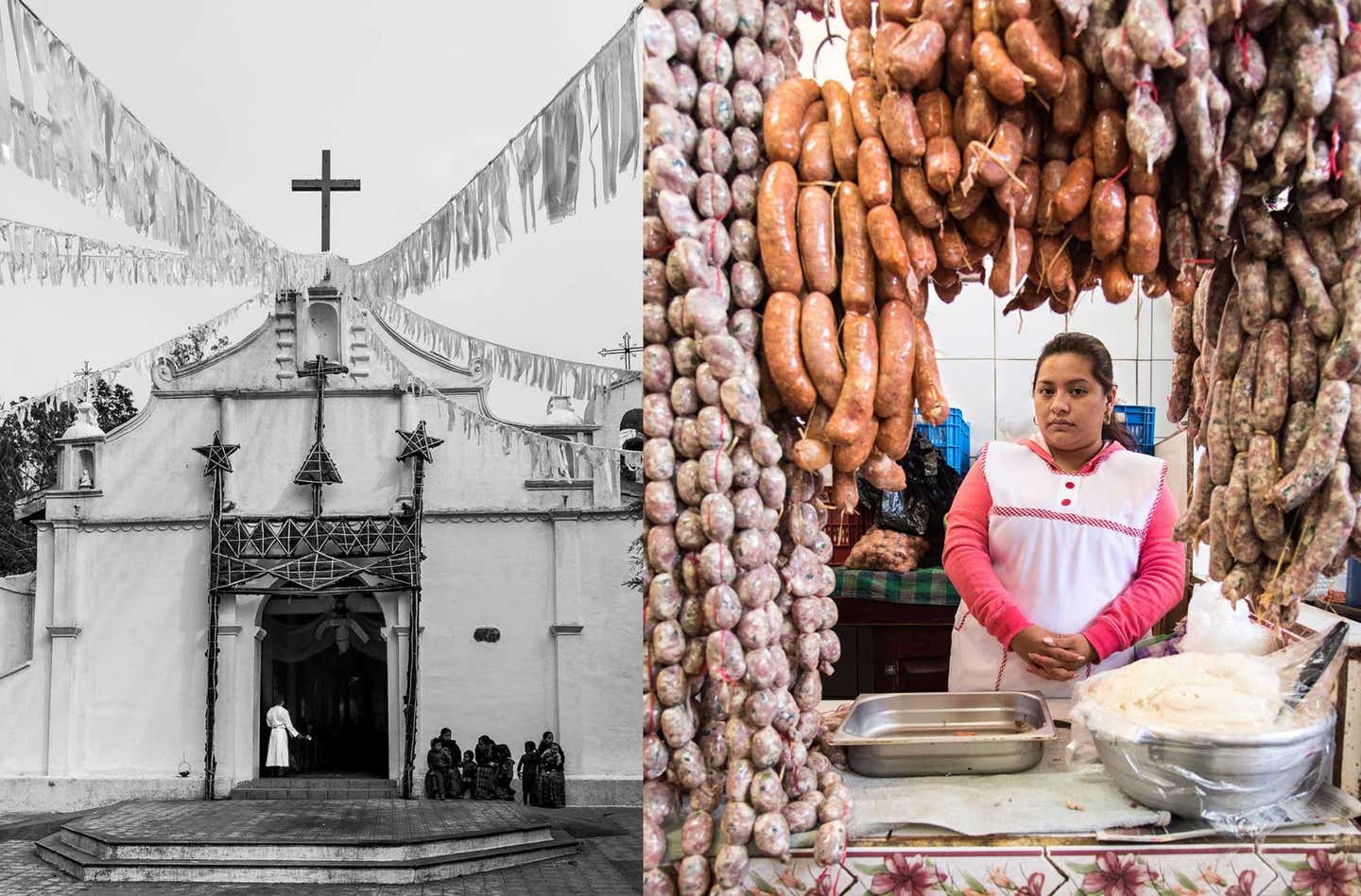
Guatemala’s Ancient Food Traditions
On wood-fired griddles, Maya home cooks keep ancient traditions alive with recipes even their neighbors wouldn’t recognize
It's getting close to lunchtime at the market in San Juan La Laguna when a vendor named Horacio tells me that I need to try some puchon-ik. San Juan is a quiet village of around 10,000 people in the highlands of central Guatemala, on the shore of Lake Atitlán and within walking distance of several volcanoes, including one that's spewing puffs of ash on this particular afternoon. At the lakeshore, motorboats zoom up to the wooden dock several times an hour to drop off small groups of European backpackers or local women balancing baskets of food on their heads. A steep road leads uphill to a concrete building with a small indoor market, where Horacio Cotuc works at a chicken stand. I've just arrived in town, and when I mention to Cotuc that I'm here to write about the country's ancestral Maya cuisine, much of which has been prepared the same way for about 2,000 years, he declares that puchon-ik, a chile-spiced dish of small, sun-dried fish, is San Juan's unrivaled favorite. Later, on my own in an empty restaurant on the village's main road, I have what seems like a stroke of luck: The waiter offers to serve me puchon-ik even though it's not on the menu. He comes back with a plate of thumb-size river fish, their heads and tails still intact. Feigning nonchalance, I begin chewing my way through several mouthfuls of whole pescaditos, but I'm distraught to discover that they are just as spiny and hard-to-swallow as they look. I hide a few half-nibbled fish under a tortilla, offer a polite “gracias” to the waiter, and return to my hotel to do what any hapless foreigner would do—Google puchon-ik. Number of results: zero.
When I recount all of this to Cotuc at the market the next day, he laughs. And not only because I'd ingested a bunch of fish heads and fins. (Except for a few hardcore elders, most locals remove them before eating the flesh.) The funniest part to him is that I'd expected to find any information at all online about puchon-ik. "I bet there's nothing on the internet about it, and there never will be," Cotuc says. It turns out that this dish can be found almost nowhere but in the home kitchens of San Juan. In another lakefront village just 2 miles away, San Marcos La Laguna, whose residents speak a different Mayan language than San Juan's, the people I talk to know nothing about puchon-ik. But they have a lot to say about a thick corn-based drink called atol maatz, which is flavored with ashes from the kitchen fire.
At a time when even the most obscure culinary cultures have been picked over by herds of eager food bloggers, Guatemala remains one of the Western Hemisphere's last true culinary terrae incognitae. Due to centuries of isolation in the volcano-strewn highlands—not to mention a brutal civil war from 1960 to 1996, plus gang-driven crime waves that have discouraged tourism until very recently—many members of the 23 distinct Maya groups in rural Guatemala still speak their own pre-Columbian languages and wear the same outfits that their great-great-great-great-grandparents did. Here, local really means local: You can often tell which village a woman is from by the colors of the birds and flowers that adorn her hand-loomed huipil, or tunic. The same goes for the way she cooks her turkey stew or macuy (a local green) broth.
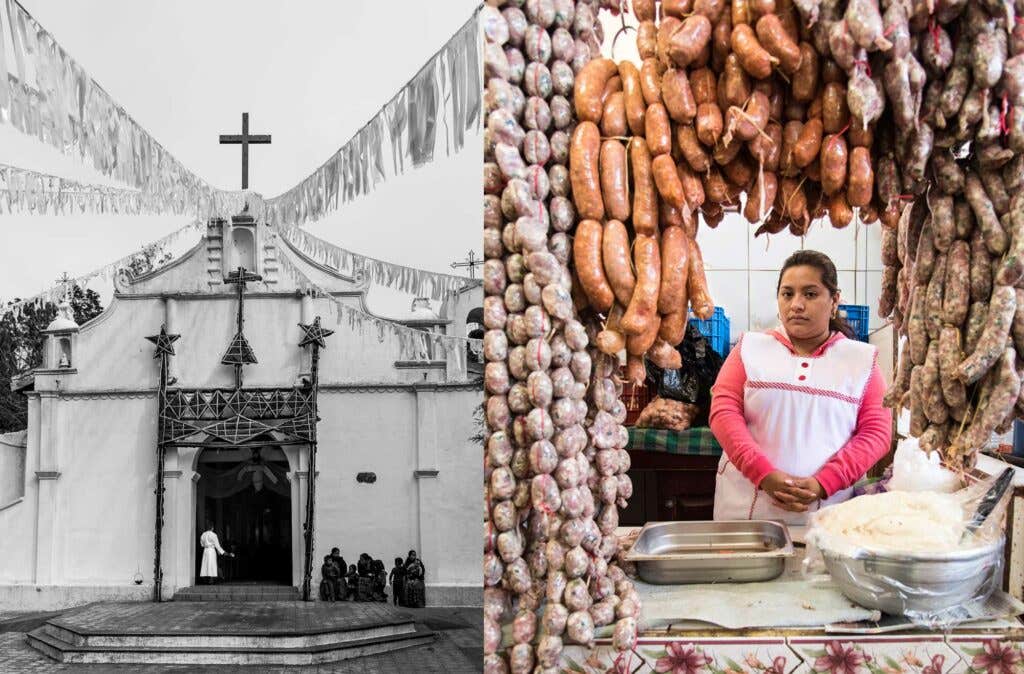
"There are probably thousands of unique ancestral dishes here," says producer and documentarian Ana Carlos, whose long-running Guatemalan television series El Sabor de Mi Tierra explored more than 50 indigenous specialties around the country. Carlos says there's been little effort by the media to document or preserve the native cuisine, in part because the ethnic Mayas, who make up more than half the population, are still seen as the underclass. "So it's really in the kitchens and at the table that people are keeping the country's culture alive," she says.
There are plenty of ancient concoctions far tastier than puchon-ik, as I learn in San Juan where Cotuc offers to connect me with a Maya villager employed in one of the textile workshops near the dock. Elena Hernandez Vasquez's house is on a dirt road in the scruffy upper part of San Juan, where the town's Maya majority lives. A few hotels and textile shops and other gringo-geared businesses are down the hill near the shore. Her kitchen walls consist of rough slats of wood, the wide spaces between them allowing sunlight to come in and smoke to go out. As she starts to boil water on the comal—a clay griddle over an open fire that's the focal point of most Maya kitchens—three chickens dart around her feet. She sets out the ingredients for tukun-ik. (The suffix-ik means "chile" in several Mayan languages, signifying that the dish contains them.) Tukun-ik, unique to San Juan, is a soup of corn masa, ground achiote, a couple of eggs, and some fresh green stems of epazote, a pungent local herb.
Speaking in her native Tz'utujil as Cotuc translates into Spanish, Vasquez explains how she copes without running water and cooking oil. "My ancestors never used them, or needed them," she says. (Sometimes she also does without pots and pans: Tomatoes and chiles and even the fish for puchon-ik are browned directly on the comal.) Though some of her neighbors have resorted to shortcuts like instant soup and canned beans, Vasquez says these dishes still thrive for economic reasons (they're simply cheaper to make from scratch), but also because they're a point of cultural pride. Vasquez wants her children to eat like she always did. "Instant soups are threatening Guatemala's unique way of cooking," she says.
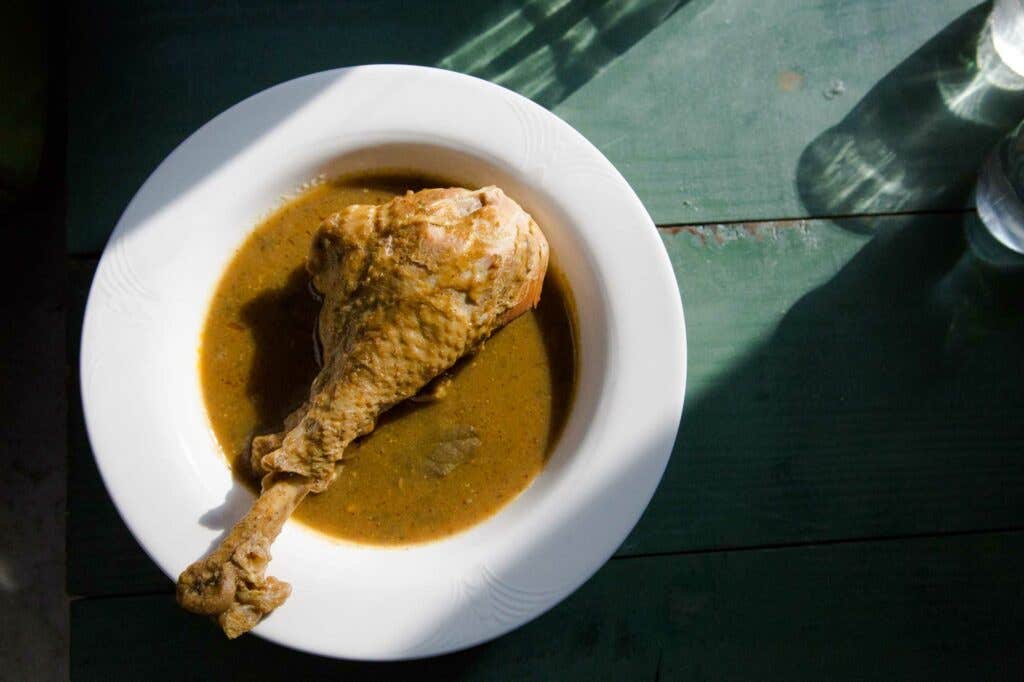
The Mayas created one of the great ancient civilizations—stretching across southeastern Mexico and northern Central America—with advanced mathematical, architectural, astronomical, and hieroglyphic systems, so it's no surprise they knew how to eat. Chocolate, guacamole, and tortillas all originated in this part of the world, long before the Spanish colonizers arrived in the 15th century. But today, for visitors and even many urban Guatemalans, the country's culinary heritage can be easy to miss. Most high-end restaurants strive for a Continental or North American vibe; local places tend to serve a handful of well-known platos tipicos such as pepián (a spiced meat stew) and beef enchiladas—dishes whose indigenous components are mixed with things the conquistadores brought over, including rice and cheese. Maya cuisine in its least adulterated form is best sampled in home kitchens and a few of Guatemala's cheap set-menu diners, called comedores.
Holding a squawking black hen, Maria Boror, 77, stands on her concrete patio preparing to snap the bird's neck. On the comal rests a bubbling pot of tomatoes, tomatillos, garlic, and four types of chiles, which will eventually be steamed together with the hen's meat and chunks of pork, inside a casing of jumbo emerald green mashan leaves (a local variant of plantain leaves), to make a dish called suban-ik. After dispatching the hen with the assurance of someone versed in six decades' worth of avian butchery, Boror drains its blood, walks to the sink to clean out its innards, and finds a surprise: a white egg, its shell fully formed. "We'll eat it," she says. "It was almost ready to come out."
Ana Carlos, who's showing me around for a couple of days, has brought me to meet Boror and her daughter Marta Hernandez Boror because they're known for the suban-ik they prepare at their comedor in San Martín Jilotepeque. Carlos and I begin the day in Antigua, the supremely scenic, UNESCO-recognized colonial city where most of the country's expats and tourists are concentrated, and we drive 90 minutes to the dusty but lively San Martín. Wealthy Guatemalans in Antigua and the capital of Guatemala City, two hours to the east, often celebrate weddings and birthdays with suban-ik; invariably the elaborate meal is prepared by their cook, who is likely to be a Maya woman. (Maya men have managed to stay out of the kitchen since about 500 BC.) Even in Boror's house, suban-ik is a special occasion dish, since a live hen costs about 70 Guatemalan quetzals, or $10—no small sum in a country where 60 percent of the population lives below the poverty line and the typical wage is $1.50 an hour.
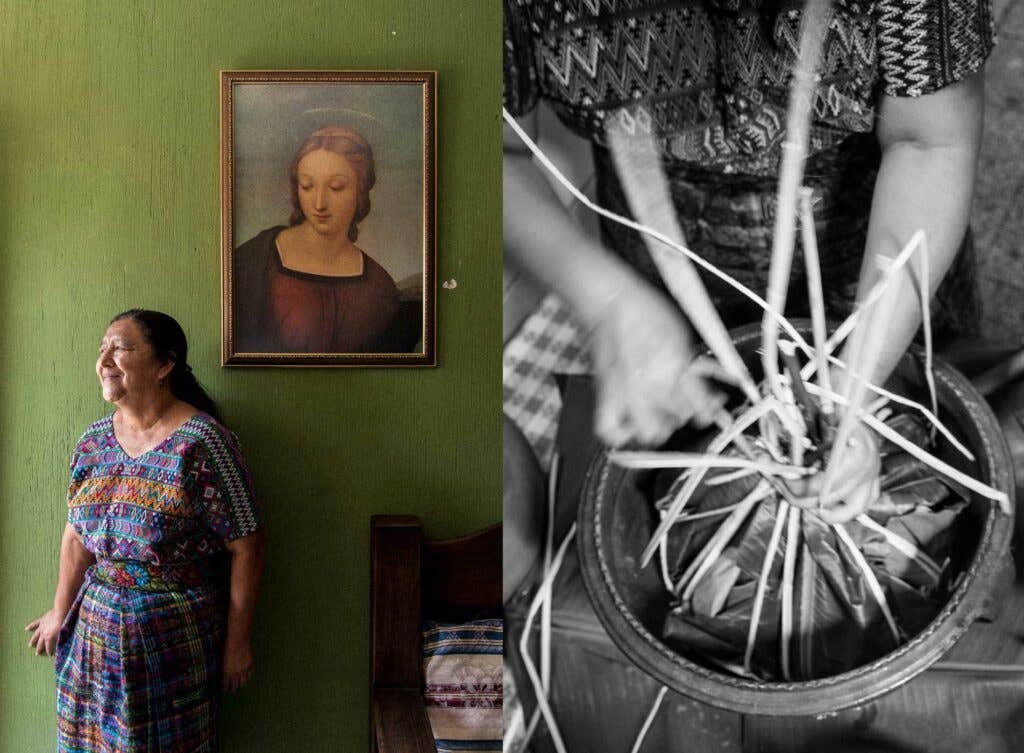
After Maria and Marta tie up the mashan leaves with pieces of strawlike cord called cibaque and stew the packet of meat and sauce on the stove, papillote style, the whole family, including two of Boror's great-granddaughters, gathers around the table for lunch. The unanimous verdict: muy rico. The flavor of the thick vermilion sauce is simultaneously deep and subtle. Marta says some locals can distinguish the taste of each of the four different chiles, yet the distinctive grassy zing from the steamed leaves is just as potent. It can't hurt that the Borors sourced every ingredient a few hours earlier at the daily outdoor market, two blocks away.
Braised Pork With Sesame and Pumpkin Seed Sauce (Choc'a)
This obscure regional dish can be tracked down only in the agricultural valley town of Almolonga in Guatemala. Adapted from a village native, Francisca Siquaná de Cotoc (who insists that a food processor could never achieve the same texture as grinding seeds by hand), this recipe is meat-focused, but its creamy, nutty sauce would pair well with any cooked vegetable. The level of spice will vary depending on the type of dried chiles used. Get the recipe for Braised Pork With Sesame and Pumpkin Seed Sauce (Choc’a) »
Guatemala's raucous local markets provide a crash course on rural life here. Whether in dedicated indoor spaces or in a jumble of outdoor stalls near a bus station, markets tend to function simultaneously as swap meets, social clubs, luncheonettes, and spiritual centers. (You might see a huipil-clad great-grandmother laying an offering of maize at a Catholic shrine in one corner, next to a teenager hawking stonewashed jeans, while in the parking lot an evangelical preacher shouts the secrets to salvation through his megaphone.) Though the Mayas have a reputation for being wary of outsiders, if you speak some Spanish and are up for tasting whatever anyone offers you, barriers quickly dissolve.
One morning while I stroll around the indoor stalls in San Cristóbal Verapaz, a six-hour drive north of Antigua in the lush coffee-growing region near the city of Cobán, someone mentions a local dish called sak-ik, a turkey stew with ground corn and chiles. Since there's a power outage today, the vendors have lit some candles and nestled them in their stacks of raw chickens. Business is slow with the lights off, so we take sips of warm atol from Styrofoam cups and chat about sak-ik recipes. When one spice vendor finds out I'm from California, she asks if that's near Oregon, where her brother lives, and wonders if I want to quit my job and launch a chile import-export business with her.
There's less to joke about whenever conversations turn to the longtime persecution of Guatemala's ethnic Mayas, which reached its peak during the civil war, when thousands were massacred by government troops. Like the multicolored huipils and headbands that women still wear every day in rural areas, the traditional dishes offer tangible links to a culture that's often been neglected or actively suppressed by the country's ruling classes. "Ritual has always been so important to the Mayas," says Carlos, "and you still see a strong ceremonial aspect in so many ancient dishes." Kak-ik, for example, is not just a turkey soup but also a key fixture in christening a new home; the blood of the slaughtered turkey is spread around the floor of the house before the bird makes it to the stove. In the highlands there's a special variety of atol that's prepared to mark the day when a boy gets his first haircut. The foam from the drink is rubbed onto his head, to ensure he'll grow up healthy, with dark and shiny hair.
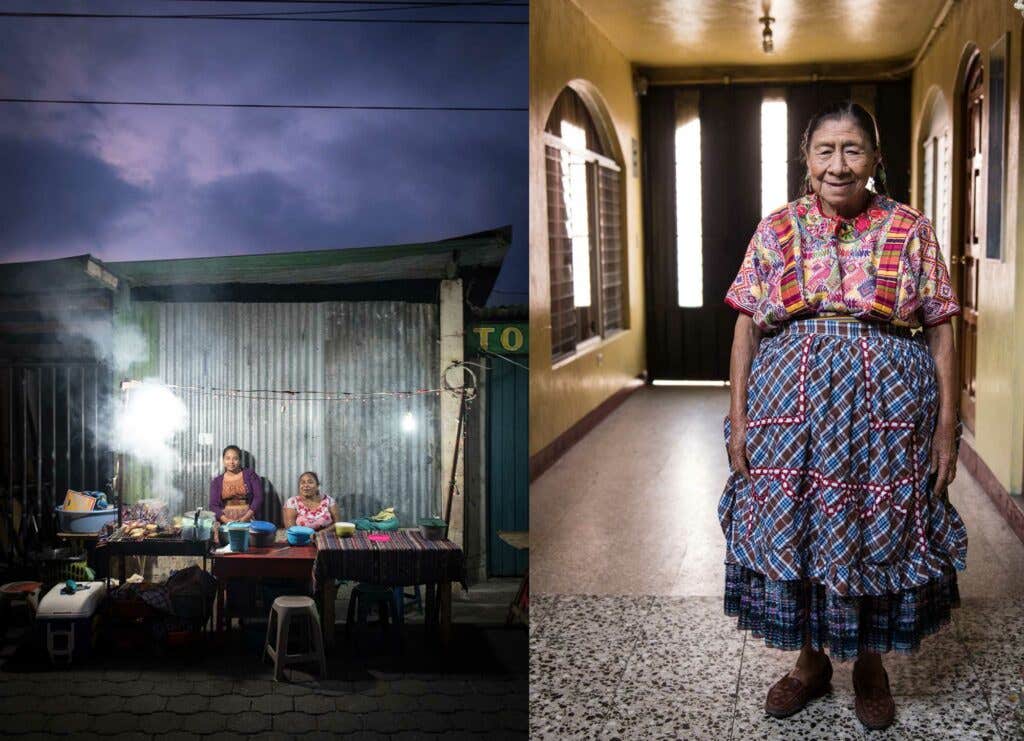
Throughout Guatemala there's also a deep reverence for chocolate, which the Mayas consumed in liquid form before the Spanish arrived. Cacao bean sellers established some of the Mayas' first trading routes, and beyond its ceremonial and medicinal importance, it was considered a luxury, used as currency, and later consumed by the Aztec elite following meals. In Quetzaltenango, the bustling city of 225,000 in the mountains two hours north of San Juan La Laguna, I hear more about cacao from Mirna Rojas, a sixth-generation Maya chocolatera, who since 2005 has run a local confectionery called Doña Pancha. "In the old days, when a Maya family had a visitor in the house, the highest honor was to serve a drink of chocolate," she says. Rojas' main concession to modernity is an electric mill, which saves her hours of crushing cacao beans at the grinding stone. ("My mother's back was as muscular as a boxer's, and she was tired all the time," Rojas says.) She insists the best chocolate needs only two ingredients—cacao and sugar. Vanilla and chiles are also fine, says Rojas, as is milk. The real enemies are the added fats and soy lecithin found in most industrial chocolate today.
The most essential food of all for the ancient Mayas, of course, was maize—not just a crop but a vital force and, according to legend, the stuff the first humans were made from. Cooks here love to hold forth on the dozens of varieties of local corn and how to cultivate them (essential tip: the cooler the soil that the corn was grown in, the longer the tortillas made from it will last). And maize turns up at every single meal, including in the country's ubiquitous tamales. Many Guatemalans claim that there are more types of tamales here than in Mexico. Popular versions like the rich, smoky pache, filled with potatoes, meat, and three kinds of chiles, are wrapped in banana leaves instead of corn husks and are big enough for a meal.
A few of Guatemala's tastiest dishes prove to be the hardest to track down. Toward the end of my trip, in Quetzaltenango, I hear a few people rhapsodizing about something called choc'a—stewed pork with a musky, mole-like sauce. Surely I can try it somewhere in the city, a restaurant or at someone's house? No, and no: Choc'a is another obscure, one-town-only specialty, so I'll need to head south to the agricultural village of Almolonga and hope for the best.
One morning I board one of Guatemala's notorious "chicken buses," the repurposed American school buses painted in technicolor stripes and driven by men with a tendency to take hairpin turns at triple the speed limit. Soon I'm walking past terraced fields of carrots and radishes toward the food stalls in Almolonga's main square. There's no sign of choc'a anywhere, but a guy selling papayas and sapotes (a soft tropical fruit) tells me to come back at 1 p.m. and ask for Francisca. I do, and there she is at a busy outdoor stall, ladling a thick pinkish sauce over chunks of pork. The ancient Mayas didn't eat beef or pork—both were introduced by the Spanish colonizers—but I overlook that detail as I down spoonfuls of this addictively unctuous dish, which combines the tahini-like creaminess of ground sesame and pumpkin seeds, the sweet tang of stewed tomatoes, and just the right overdose of black pepper. Francisca Siquaná de Cotoc invites me to her house the next day to watch her and her two daughters prepare that afternoon's batch. The secret: toasting the seeds before grinding them by hand, then blending in the tomatoes right on the grinding stone. "Using a blender doesn't just affect the texture but the flavor, too," de Cotoc says.
The spicy Maya soup kak-ik, unlike choc'a, can be found without loitering for hours in markets while waiting for Francisca. It's available in several parts of the country, even in restaurants, and is eminently Google-able. Imagine a triple-strength version of grandma's turkey soup, with gamier meat, lots more cilantro, and a slow-burn jolt from local chiles. I sample it in its city of origin, Cobán, where Ana Carlos connects me to a woman named Carmen Grisela Popchun whose kak-ik is so renowned she once cooked it for the president of Guatemala. The recipe comes from her mother, she says, "who learned it from her mother, and you can guess who she learned it from." Today Popchun has been hired to make enough kak-ik for a 200-person baptism celebration, meaning that her 14-year-old grandson will be killing a lot of turkeys in her cluttered courtyard in the middle of town.
Popchun is a no-nonsense type, her fingers deeply callused from years of moving things around on hot comals, and she has strong opinions about most topics. I figure that she'll have lots to say about some of the other Maya dishes I've tried during the past week. I ask for her thoughts on suban-ik, puchon-ik, tukun-ik, and a few more, but Popchun looks at me blankly. She's never heard of them.
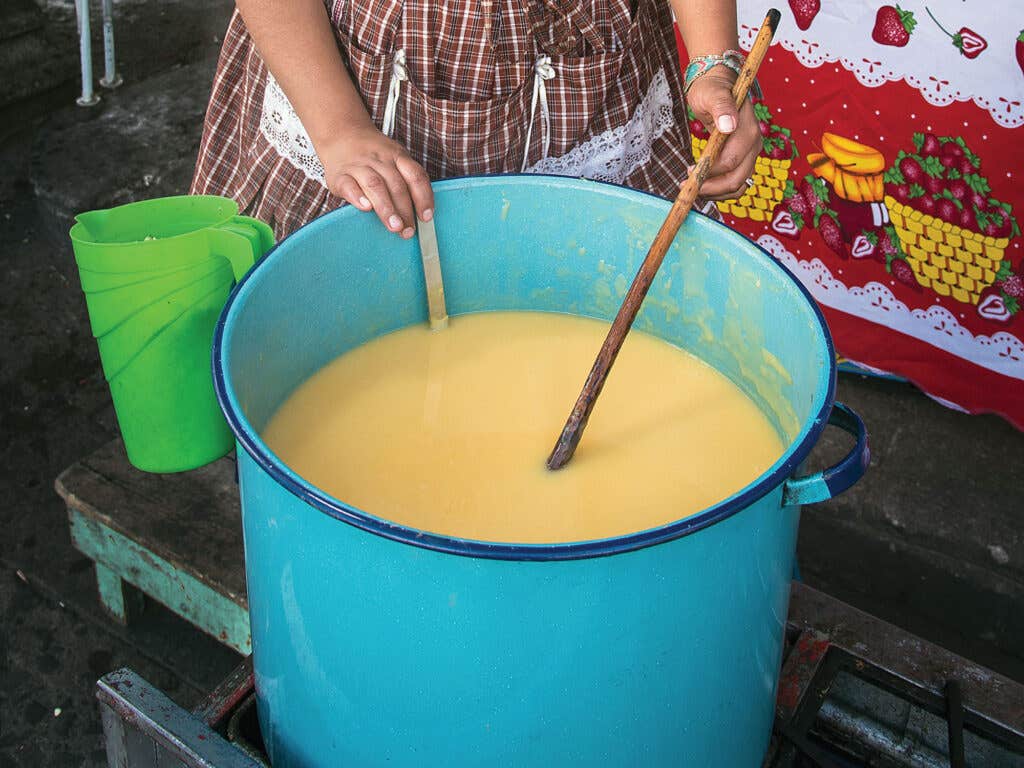

Braised Pork With Sesame and Pumpkin Seed Sauce (Choc'a)
This obscure regional dish can be tracked down only in the agricultural valley town of Almolonga in Guatemala. Adapted from a village native, Francisca Siquaná de Cotoc (who insists that a food processor could never achieve the same texture as grinding seeds by hand), this recipe is meat-focused, but its creamy, nutty sauce would pair well with any cooked vegetable. The level of spice will vary depending on the type of dried chiles used. Get the recipe for Braised Pork With Sesame and Pumpkin Seed Sauce (Choc’a) »
Keep Reading
Continue to Next Story
